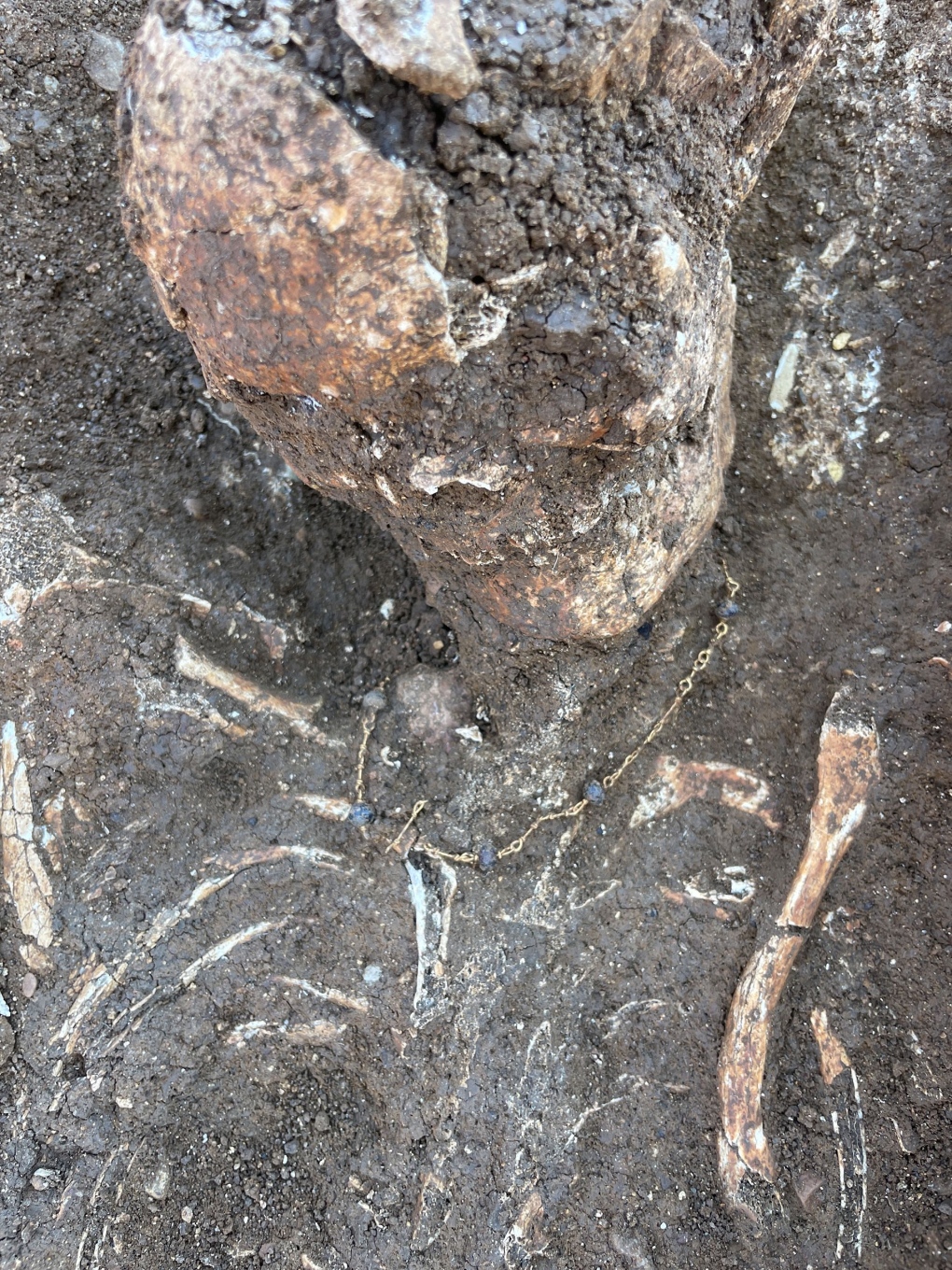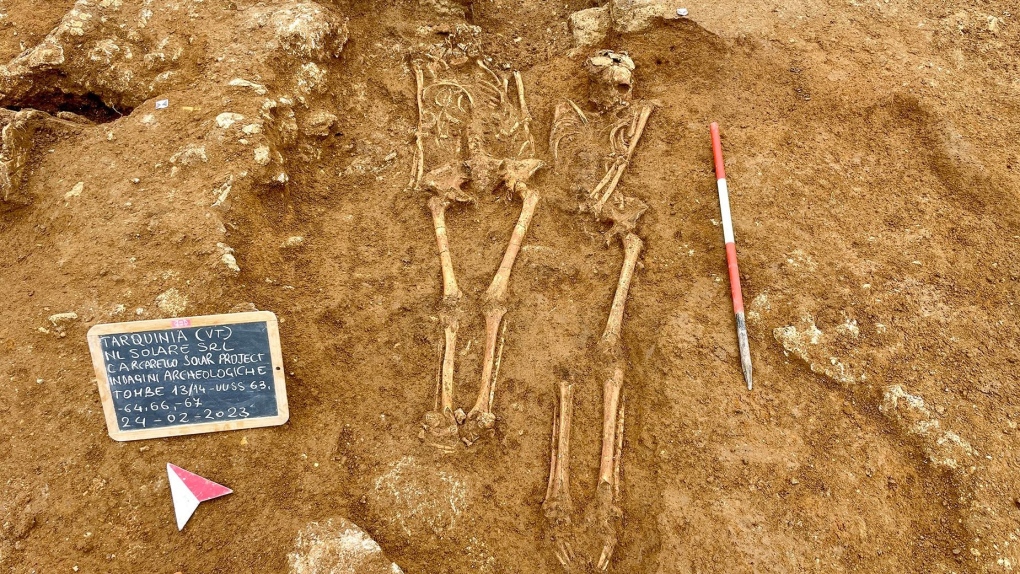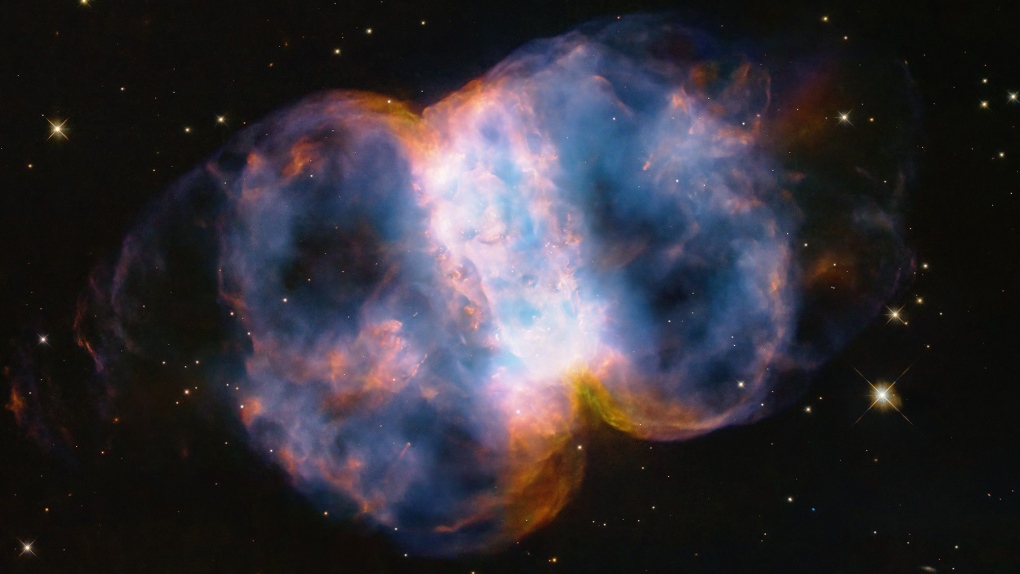ROME –
A two-year dig to install a solar power plant near Rome has unearthed an ancient Roman necropolis containing 67 skeletons buried in 57 ornate tombs.
Archaeologists were baffled by the find — thought to date between the second and fourth centuries — not least because the skeletons were discovered wearing golden jewelry and expensive leather footwear, inside tombs designed to resemble their homes.
The discovery— on a 52-acre patch of land close to the ancient city of Tarquinia, north of Rome — was a surprise to authorities, despite the area being renowned for such findings.
Silver rings with amber and engraved initials, precious stones, terracotta pottery, coins, shiny glasses, amulets and even items of clothing were found alongside the golden necklaces and earrings.
“We found several skeletons still wearing their expensive stockings and shoes,” Emanuele Giannini, lead excavation archaeologist at the site told CNN. “All these riches and the fact that the bones show no sign of stress or physical labour, (leads us to believe) these weren’t local farmers, but upper-crust members of Roman families coming from cities.”
Giannini said techniques of “pre-emptive archaeology” such as field surveys and trial trenches were used to identify potentially ancient constructions below ground.
“We did have a faint idea that some treasure could lie there, as historical sources mentioned the location of a postal station for travellers near the site,” explained Giannini. “Many Romans would stop (here) for the night to eat and rest, but the magnitude of the discovery is unmatched.”
The diversity of funerary objects laid near the remains and the luxurious designs and linings inside the tombs have led archaeologists to believe that the occupants wanted to recreate heavenly spaces similar to their earthly homes. The interior of many tombs originally featured elaborate cloth linings or were surrounded and covered by tiles or terracotta pieces, like little houses.
Giannini said another astounding aspect is that most of the discovered tombs were communal — built for at least two occupants who likely shared a family link. A few skeletons were found wrapped around each other.
“Building tombs for entire family nuclei is a typical ancient Roman trait,” he said, “but these are outstanding in their inner decor, which shows wealth and status.”
The shallow tombs were found just 20 inches below the surface — almost popping out of the grass — yet nobody had ever noticed anything peculiar.
The site’s unique state of preservation has been attributed to the fact that “huge limestone blocks that stick out of the ground (made) ploughing, seeding and modern farming impossible in the area,” said Giannini. “It has remained untouched (for) centuries.”
Findings from the dig, which started in 2022, are being preserved as they’re found and many are going on show at the renaissance castle of Santa Severa in the coastal town of Santa Marinella. The skeletons, however, are being analyzed to determine their origins and will not be put on display until forensic tests have been carried out.
Silver rings with amber and engraved initials, precious stones, terracotta pottery, coins, shiny glasses, amulets and even items of clothing were found alongside the golden necklaces and earrings. (Emanuele Giannini)
Whatever their genesis, authorities are certain more hidden wonders will come to light as digs for the solar park move to another nearby site.
“We are excavating a huge rural area to redevelop the land and are balancing the need to avoid ruining such unique wonders with the goal of boosting clean energy production,” Margherita Eichberg, art heritage superintendent of the provinces of Viterbo and southern Etruria for Italy’s Culture Ministry, told CNN. The area where the necropolis has been discovered will not form part of the solar park and will be cordoned off for safety reasons, without public access.
“This is the fascination and beauty of Italy: Each time there’s a dig, incredible wonders from the past come out of the ground which need to be preserved.”
 Archaeologists say the discovery of 67 skeletons dressed in their finery across in 57 tombs is “unmatched.” (Emanuele Giannini)
Archaeologists say the discovery of 67 skeletons dressed in their finery across in 57 tombs is “unmatched.” (Emanuele Giannini)




